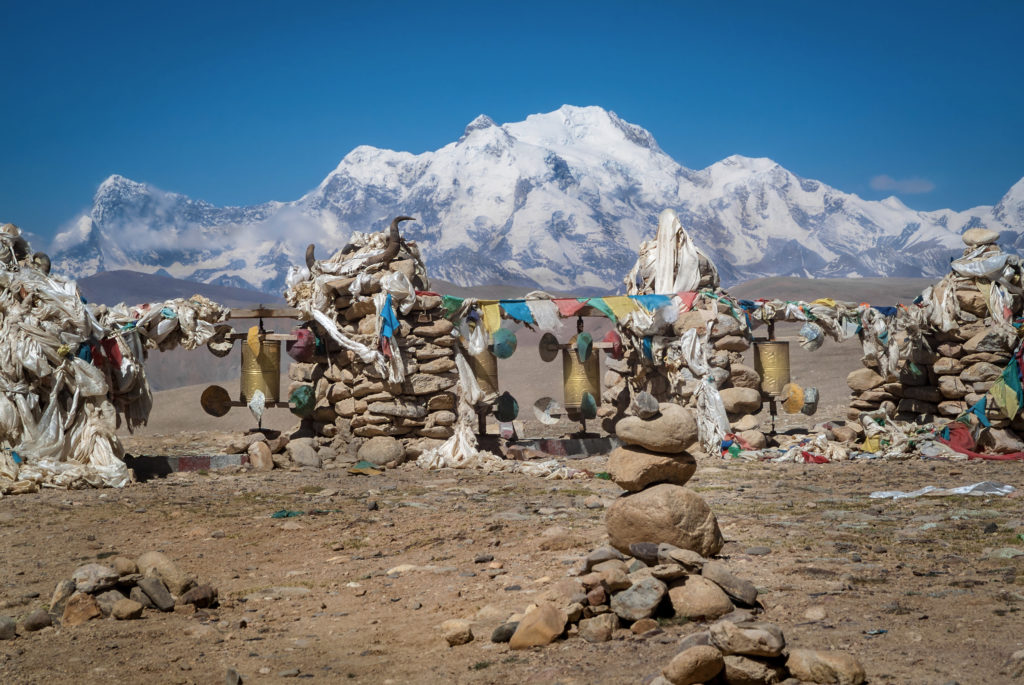
UPDATED FOR 2021: Tibet is home to 5 of the world’s 14 highest peaks. Read on for info on how to get to these peaks. More info at: thelandofsnows@gmail.com
Contact us for FREE Tibet travel planning
For current travel regulations in Tibet, go to the following link: 2021 Tibet Travel Update
The Land of Snows is the travel blog of Himalaya Journey, a leading travel/adventure company that combines the expertise of North American, Tibetan, Nepali and Bhutanese staff. We are the experts in Himalayan travel as we have many decades of experience traveling, climbing and trekking in Tibet, Nepal, Bhutan and Ladakh (India). Use us for free trip planning, what travel routes to take, when to go, How to get to Tibet and more! Contact us at: thelandofsnows@gmail.com.
For additional information on Tibet travel, connect with us on social media:
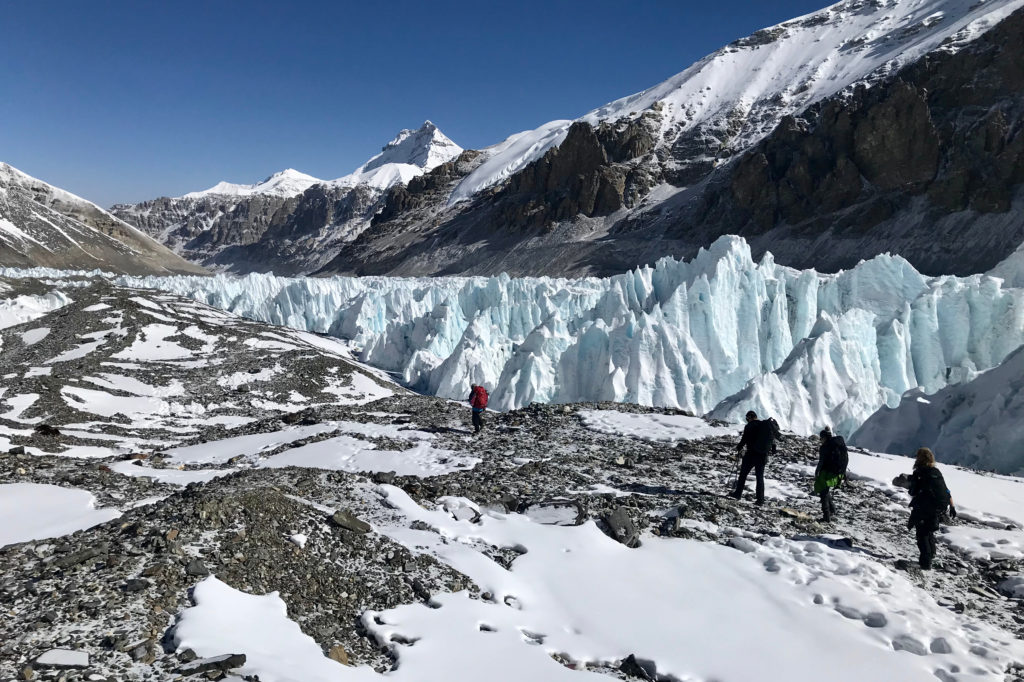
Glacier along the Everest Advanced Base Camp Trek in Tibet
What are the Highest Mountains in Tibet?
In addition to being home to 5 of the world’s 14 highest peaks, the Tibetan Plateau has at least 26 of the 100 highest mountains on the planet. Most of these peaks are in the Himalayas along the border with Nepal, Bhutan or India. Many of these giant mountains are remote and hard to access and, at best, can only be seen from a distance. Others are easier to reach and with base camps that can be reached by vehicle. Over the past 17+ years, I have been able to explore many of the big mountains in Tibet. In this post, I will write about the 5 Highest Mountains in Tibet, along with some of the other big peaks found across the Tibetan Plateau.
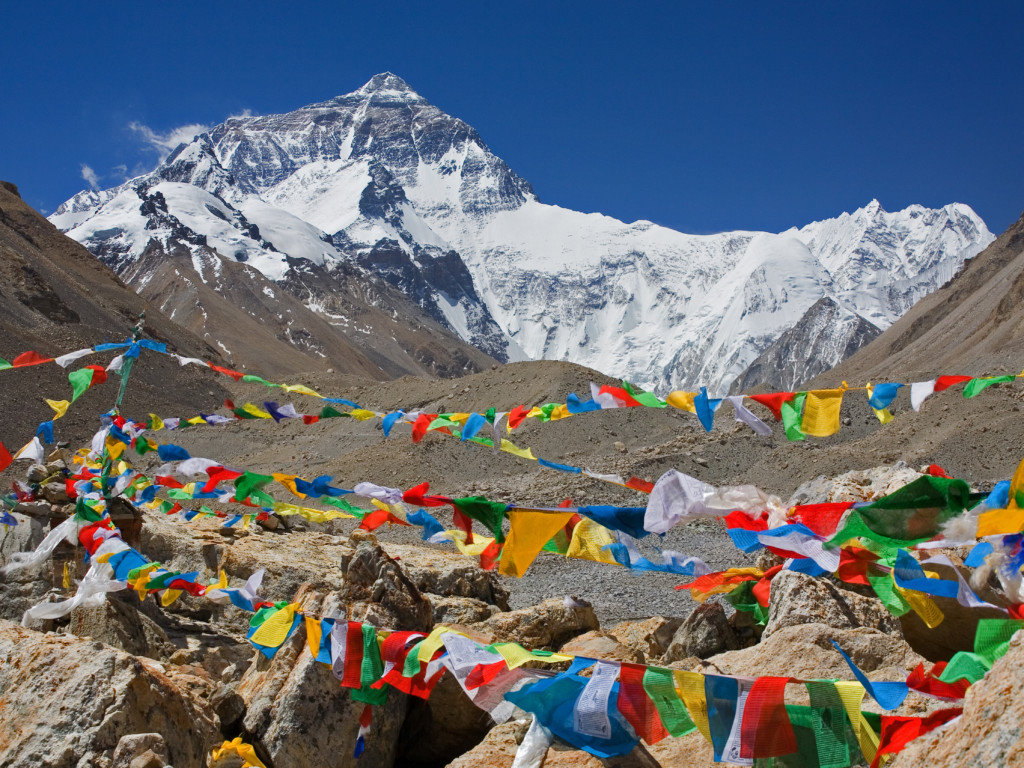
The Tibet side of Mt Everest
Mt Everest
At 8848 meters / 29,029 feet, Mt Everest is the highest peak on our planet. It straddles the border between Tibet and Nepal, with a climbing base camp on each side. Roughly 65% of climbers go from the Nepal side, with the remaining 35% going from the Tibet side. Everest was first summited on May 29, 1953 by New Zealander Edmund Hillary and Sherpa Tenzing Norgay.
While the Nepal-side Everest base camp requires you to trek to reach it (takes about 2 weeks roundtrip), the Tibet-side Everest base camp can be reached by road and is one of the most popular destinations in Tibet. The main starting point to reach the Tibet-side of Mt Everest base camp is the city of Lhasa. This journey typically takes 9 or 10 days to complete ending either back in Lhasa or in Kathmamdu (top places to visit in Kathmandu). For more info on going to either the Nepal or Tibet side Mt Everest base camp, contact us!
Call us at (+1) 253 289 9166 in the US/Canada, (+44) 20 3239 2917 in the UK, (+61) 2 8003 5630 in Australia or email us for more details at: info@himalayajourney.com
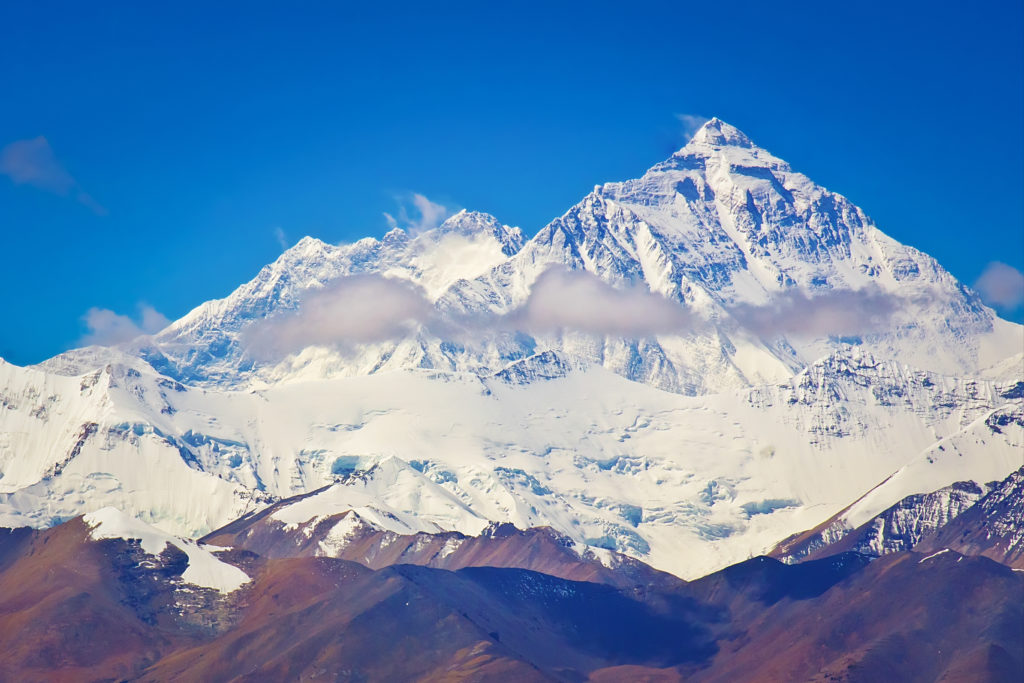
Viewed from Geu La Pass in Tibet; Lhotse on the left with Everest on the right side.
Lhotse
You might not have heard of it, but Lhotse is the 4th highest peak on the planet at 8516 meters / 27,940 feet high and is located along the border between Tibet and Nepal. It is part of the Everest Massif and located just a few kilometers from the Everest summit. In fact, most climbers attempting Everest from the Nepal side go up the Lhotse Face to the South Col before reaching the top of Everest. Lhotse was first summited by a Swiss team on May 18, 1956.
While you can get some excellent views of Lhotse from the Nepal side, getting a good, up-close view from the Tibet side is a bit more challenging. For most, the best view of Lhotse from the Tibet side will be on a clear day from the Geu La Pass, elevation 5198 meters. The best view of Lhotse is probably along the Kangshung Valley Trek near Kharta, an area to the east of Mt Everest. This is an outstanding trek, but very few people do it or have even heard of it.
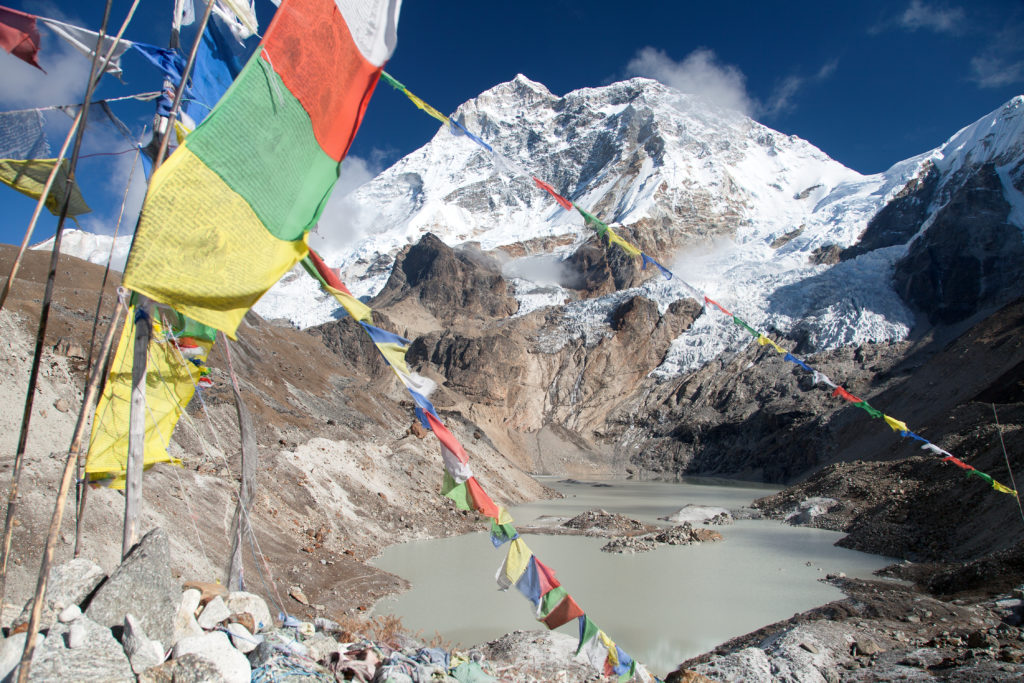
Makalu is the 5th highest peak on the planet and is along the Nepal and Tibet border.
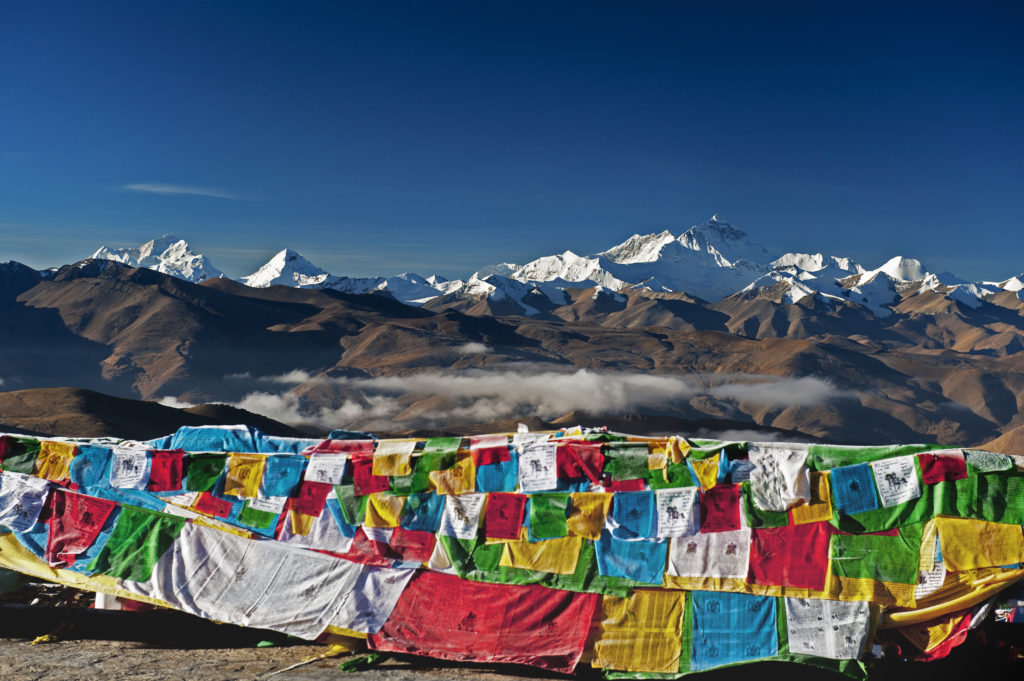
Makalu, far left, viewed from Geu La Pass in Tibet. Everest is the higher peak on the right side.
Makalu
Makalu, elevation 8485 meters / 27,838 meters, also lies along the border of Tibet and Nepal. It is the 5th highest peak on the planet. Like Lhotse, getting a good, up-close view of Makalu in Tibet isn’t easy. The most common place to get a view of Makalu is the Geu La Pass, along the way to the Tibet Everest base camp, but this view is from a distance. A much better view of Makalu in Tibet is along the Kangshung Trek, similar to Lhotse.
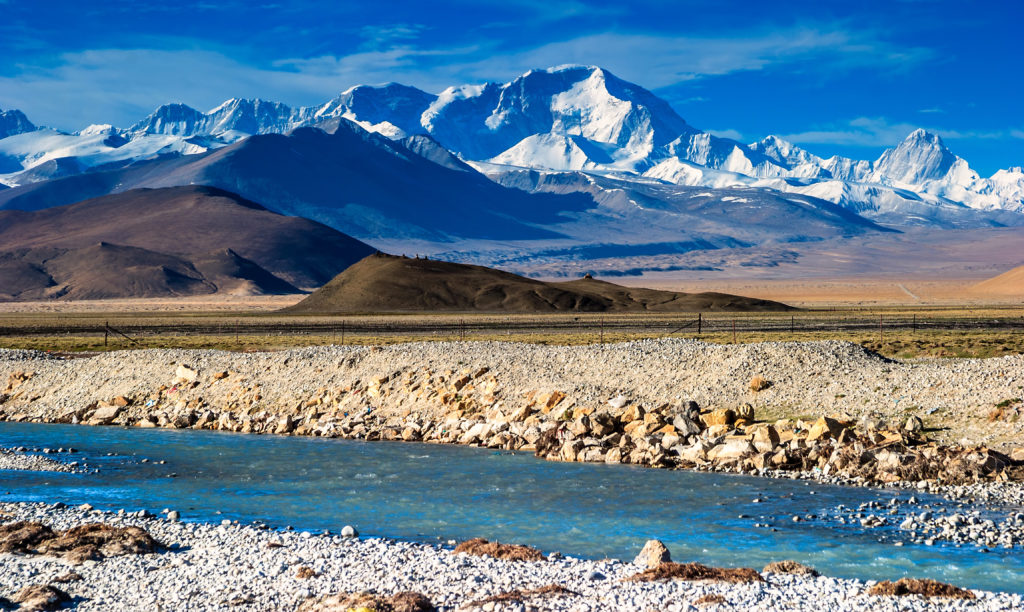
Cho Oyu, viewed from Old Tingri in Tibet, is the 6th highest peak on the planet
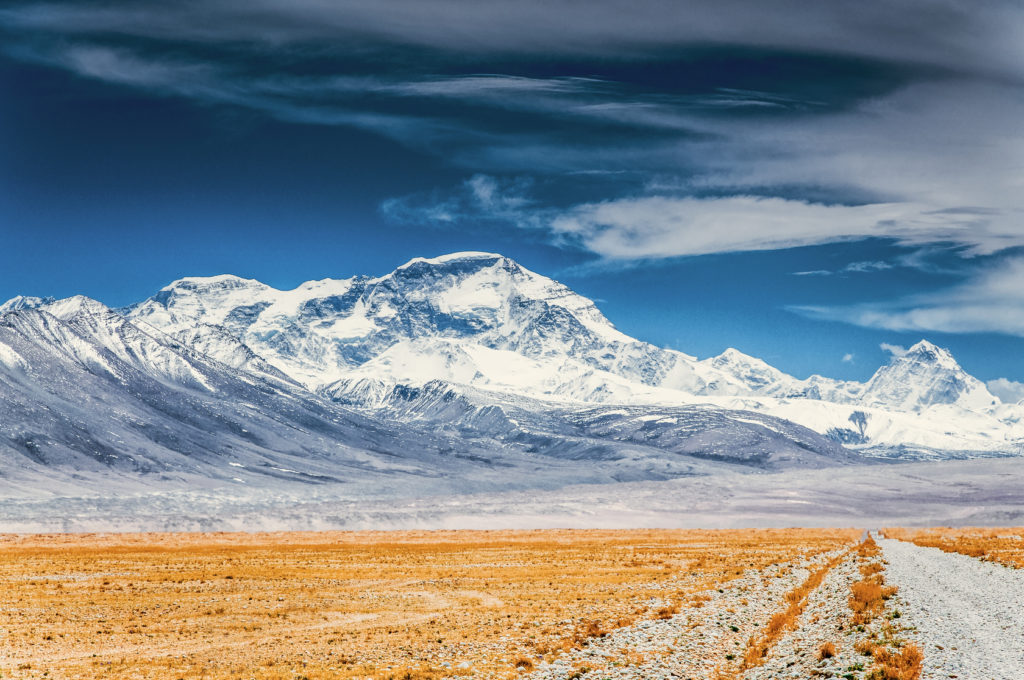
The road leading to Cho Oyu base camp in Tibet
Cho Oyu
The 6th highest peak on the planet is Cho Oyu, elevation 8201 meters / 26,906 feet. Like Everest, Lhotse and Makalu, Cho Oyu lies along the border of Tibet and Nepal and is 20 kilometers west of Mt Everest. Cho Oyu was first summited on October 19, 1954 by an Austrian and Nepali team. Though still extremely challenging due to its altitude, Cho Oyu is considered to be one of the lesser difficult 8000 meter peaks to climb.
You can get some great views of the Tibet-side of Cho Oyu from its base camp. Many travelers to Tibet don’t realize that you can easily reach Cho Oyu by road without any trekking. From the town of Old Tingri, there is a road leading due south to base camp. Including Cho Oyu to a journey to Everest base camp is quite easy. Contact us for more details at: info@himalayajourney.com
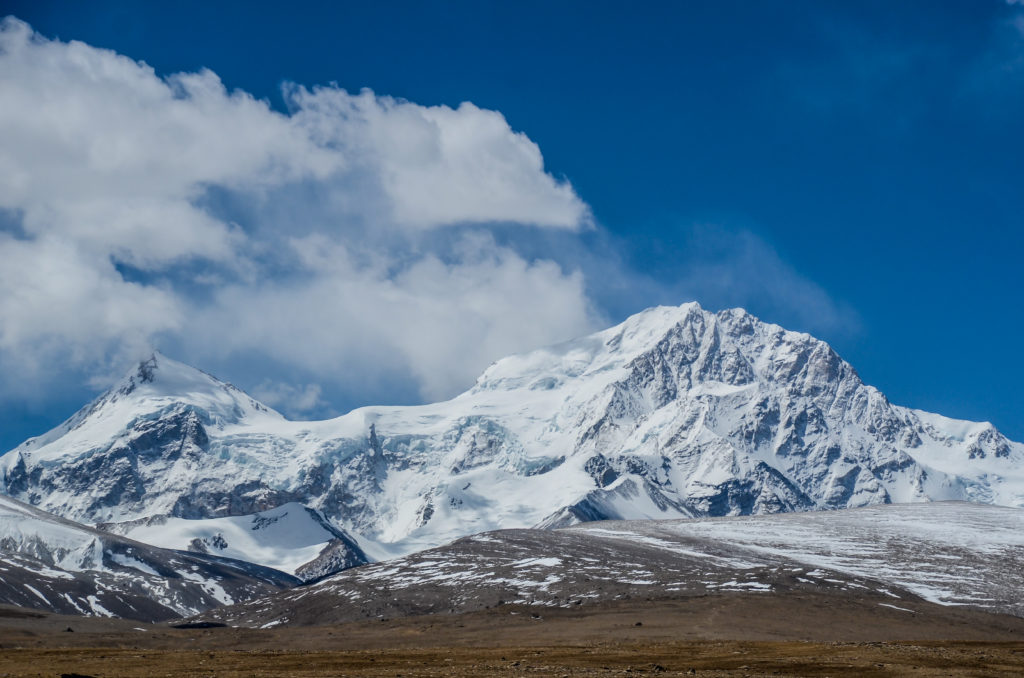
The view of Shishapangma from base camp in Tibet
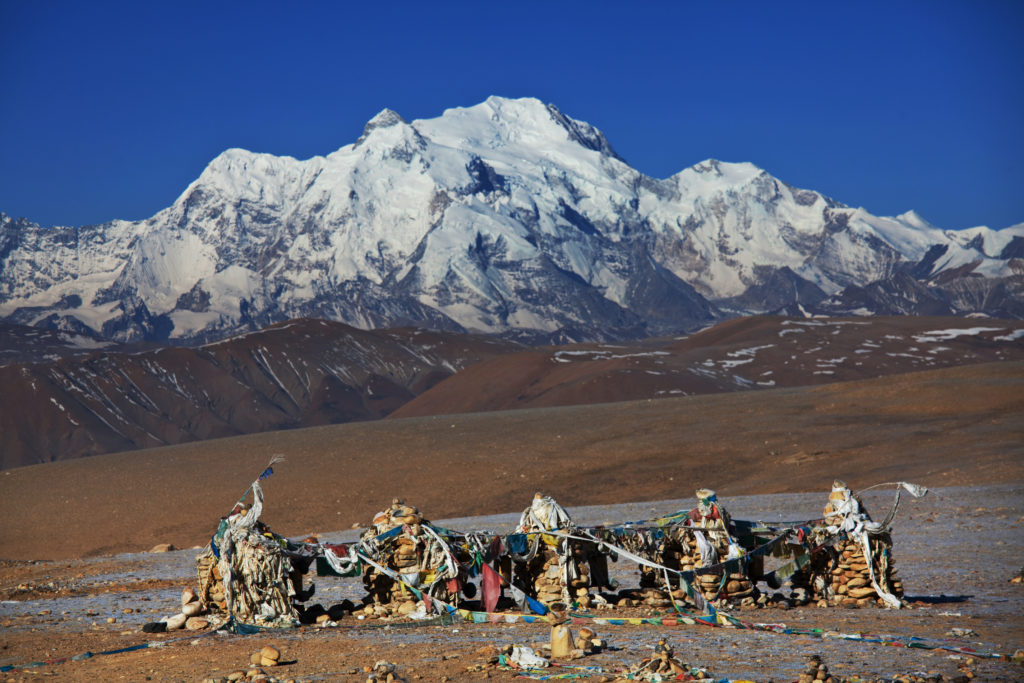
Shishapangma is the 14th highest peak on the planet and the highest that is entirely in Tibet
Shishapangma
Shishapangma is the 14th highest peak on the planet at 8027 meters / 26,335 feet. It is the highest peak that is entirely within Tibet. It was first summited by a Chinese team in 1964. It was the last of the 8000 meter peaks to be summited. This was due to the strict regulations on foreigners visiting Tibet during the 1950’s and ’60’s.
Like the Tibet side of Everest and Cho Oyu, you can reach the base camp of Shishapanga by road. Despite having a road, very few travelers go there. It is actually one of the BEST kept secrets in Tibet. From Shishapangma Base Camp, you can a spectacular up-close panoramic view of the Himalaya Range, including numerous peaks above 6500 meters. This is one of my favorite places to do some day hiking and camping.
If you don’t make it to the base camp of Shishapangma, you can still get a great view of this giant peak along the way to the Nepal border and along the way from Everest Base Camp to Mt Kailash in western Tibet.
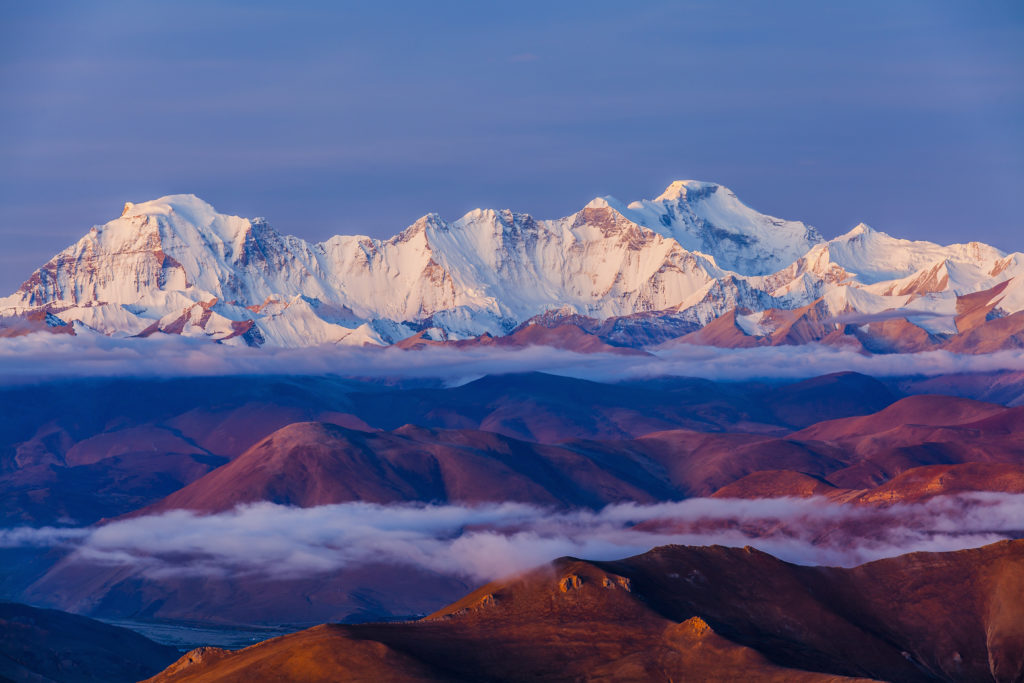
Gyachung Kang on the far left with Cho Oyu on the right
Gyachung Kang
Coming in at the 15th highest peak in the world is Gyachung Kang, elevation 7952 meters / 26,086 feet. It lies along the border of Tibet and Nepal. just a few kilometers away from Cho Oyu, the 6th highest mountain. While you can get an amazing view of Gyachung Kang in the Gokyo Region of Nepal, from Tibet you can only see it from a distance. The best view of Gyachung Kang in Tibet is from the Geu La Pass, which is along the way to the Tibet side Everest base camp.
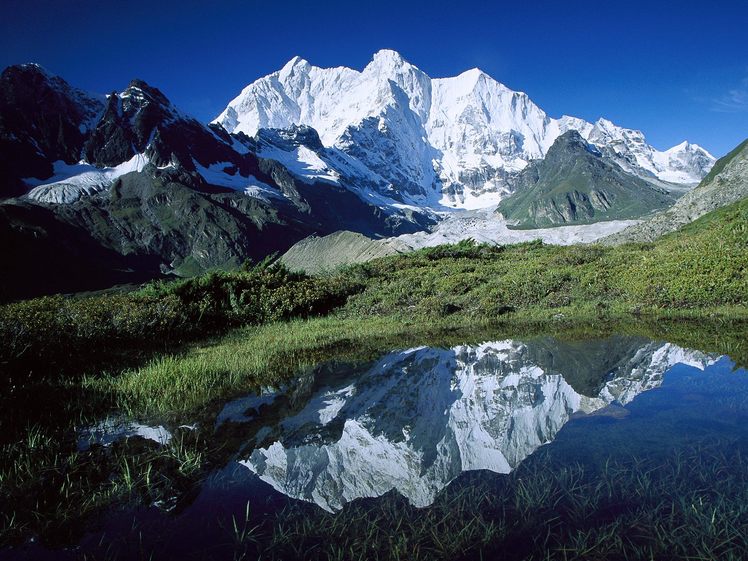
Chomo Lonzo is the 24th highest peak
Chomo Lonzo is the 24th highest peak on the planet and is located entirely inside Tibet. It is found just 5 kilometers northeast of Makalu, the world’s 5th highest mountain. For a great view of this peak, consider the Kharta Kangshung Valley Trek, which is probably the most scenic in Tibet.
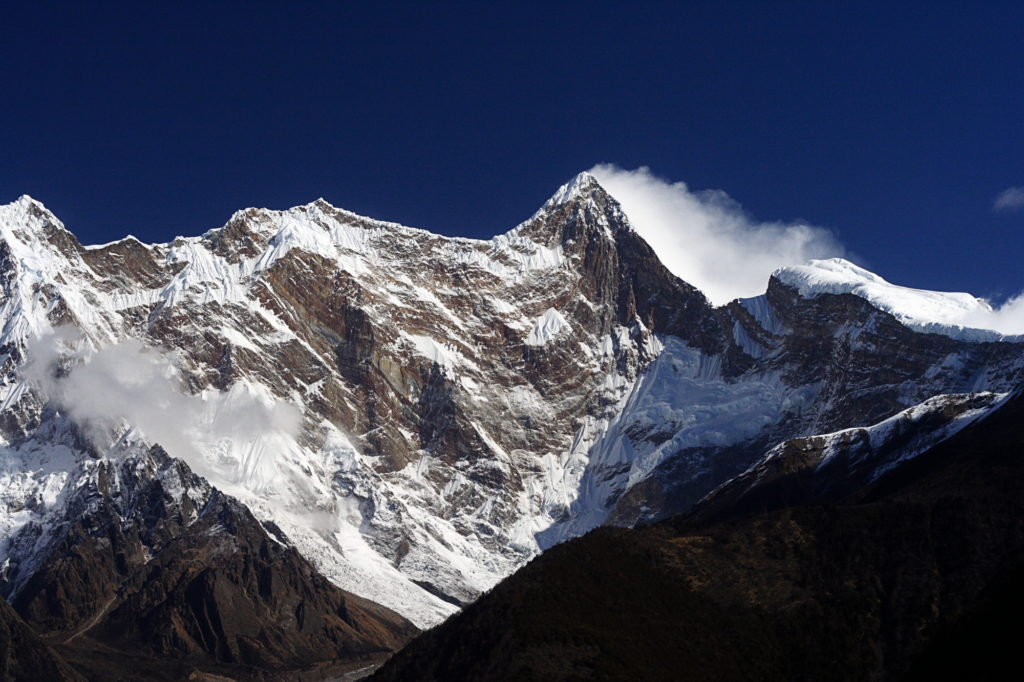
Namcha Barwa is located in eastern Tibet
Namcha Barwa
Located in eastern Tibet is the 28th highest mountain, Namcha Barwa. Relatively few foreign travelers see this Himalayan giant. The reasons are because it is located in eastern Tibet’s Nyingtri Prefecture, which is one of the lesser traveled regions of Tibet. Another reason few people see this is because the mountain is often covered in clouds. Getting a good, clear view isn’t common. To see this mountain, fly from Chengdu into the Nyingtri Airport and then travel east about 100 kilometers by road. The best months are April, October and November. This peak was not summited until 1992.
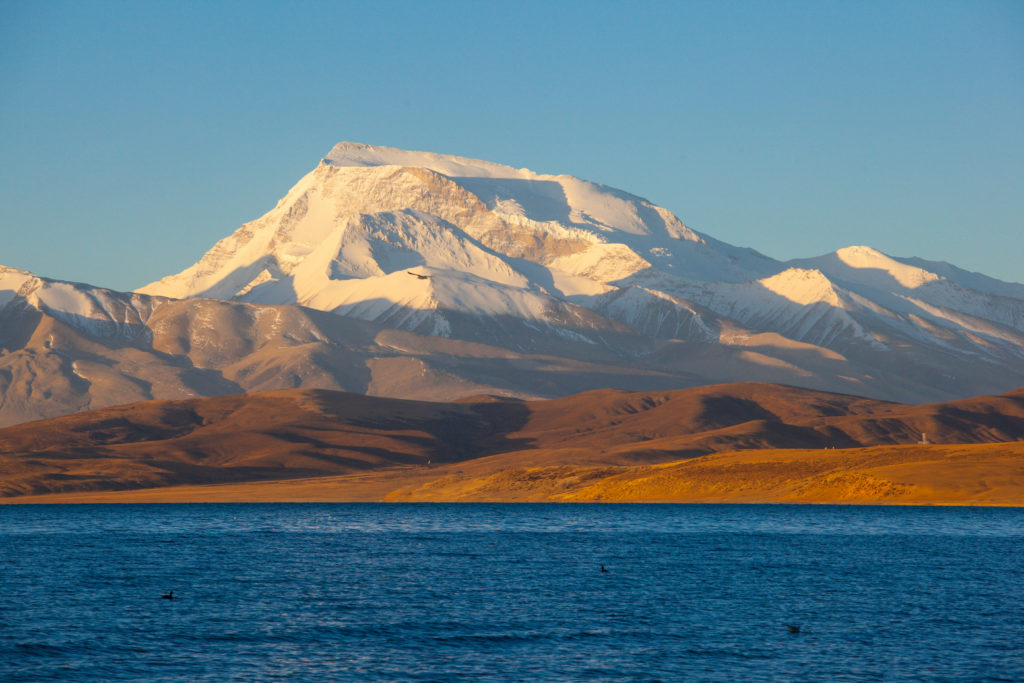
Gurla Mandhata is in far western Tibet and is the 34th highest mountain
Gurla Mandhata
If you go to far western Tibet’s Lake Manasarovar or Mt Kailash, you will see an impressive mountain named Gurla Mandhata, also known as Naimo Na’nyi. It is entirely in Tibet and sits at an elevation of 7694 meters / 25,243 feet. If you go to Lake Manasarovar, take a walk to the right side of the lake (yes, I know; that’s counter clock-wise) in a kilometer or so, you will get a great view of this peak. Gurla Mandhata wasn’t summited until 1985.
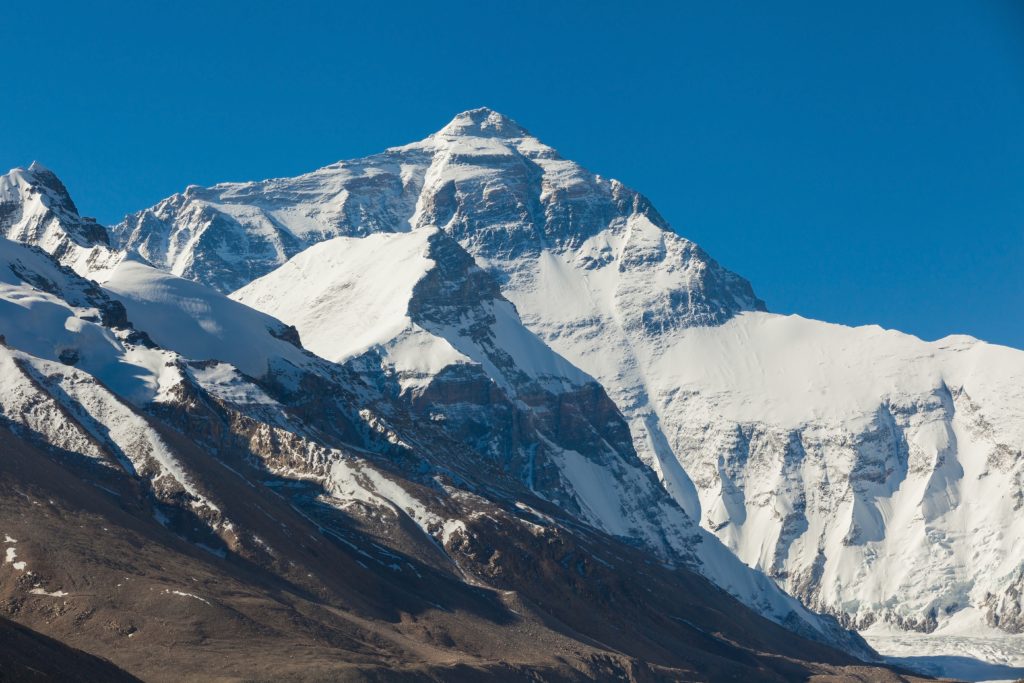
Everest is the highest peak with Changtse rising just beneath it
Changtse
The world’s 44th highest peak is Changtse, located entirely in Tibet. Changtse is connected to Mt Everest by the North Col. Changtse can be viewed from both the Nepal Everest base camp as well as the Tibet side base camp. If you want a closer view, consider doing the Tibet Everest Advanced Base Camp Trek.
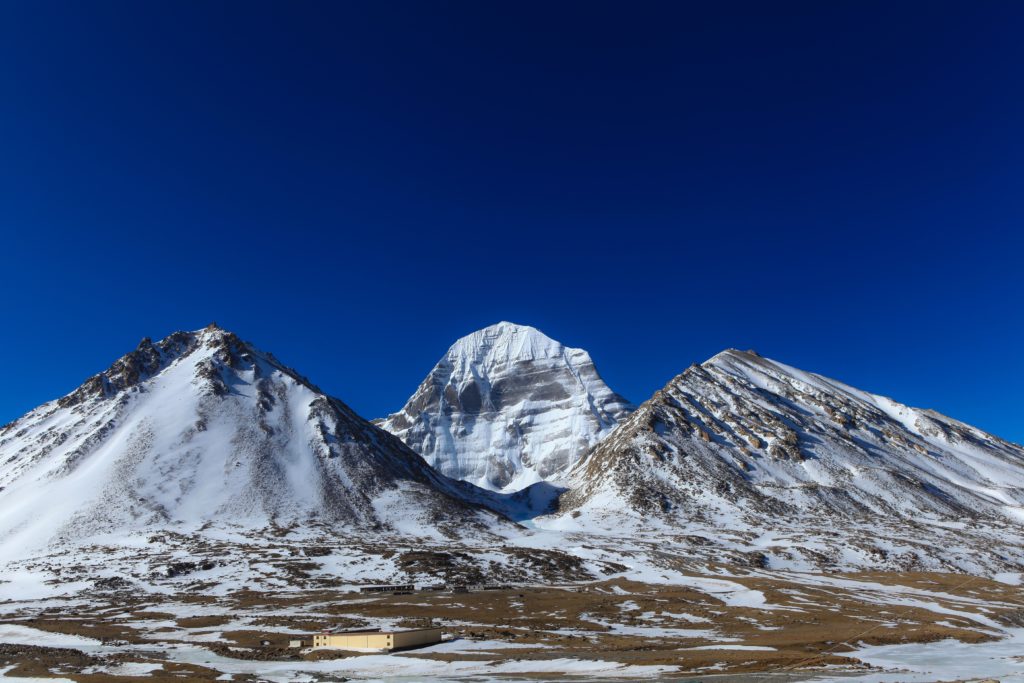
The holy mountain of Kailash in western Tibet
Mt Kailash
Though not one of the highest mountains in Tibet, Mt Kailash is by far the most sacred. Kailash is the holy mountain to Hindus, Buddhists, Jains and Bönpo. It sits at an elevation of 6718 meters in far western Tibet. Each year, thousands of pilgrims make the 3 day trek around the mountain. For more info on Mt Kailash, go to the following link: How to get to Mt Kailash
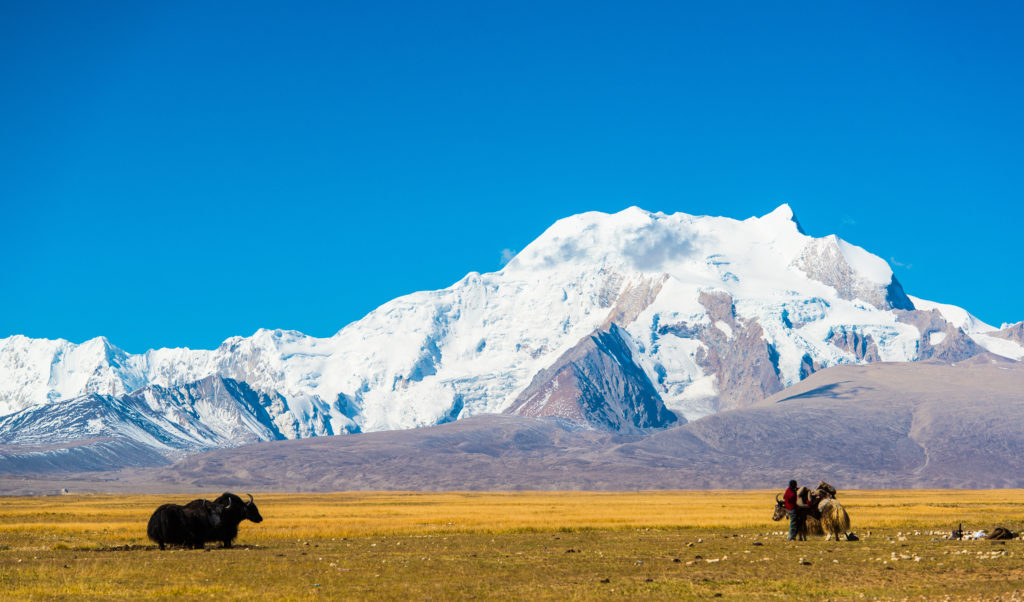
Kang Benchen is located near Shishapangma
Summary of Highest Mountains in Tibet
Tibet is covered in high, glacier covered peaks. Many of the highest mountains in Tibet can be reached by road. Though Everest is well-known, there are so many other amazing peaks that I recommend going to on your Tibet journey.
For more information on the Highest Mountains in Tibet or for journey information in Tibet, contact me at (+1) 253 289 9166 in the US/Canada, (+44) 20 3239 2917 in the UK, (+61) 2 8003 5630 in Australia or email us for more details at: info@himalayajourney.com
